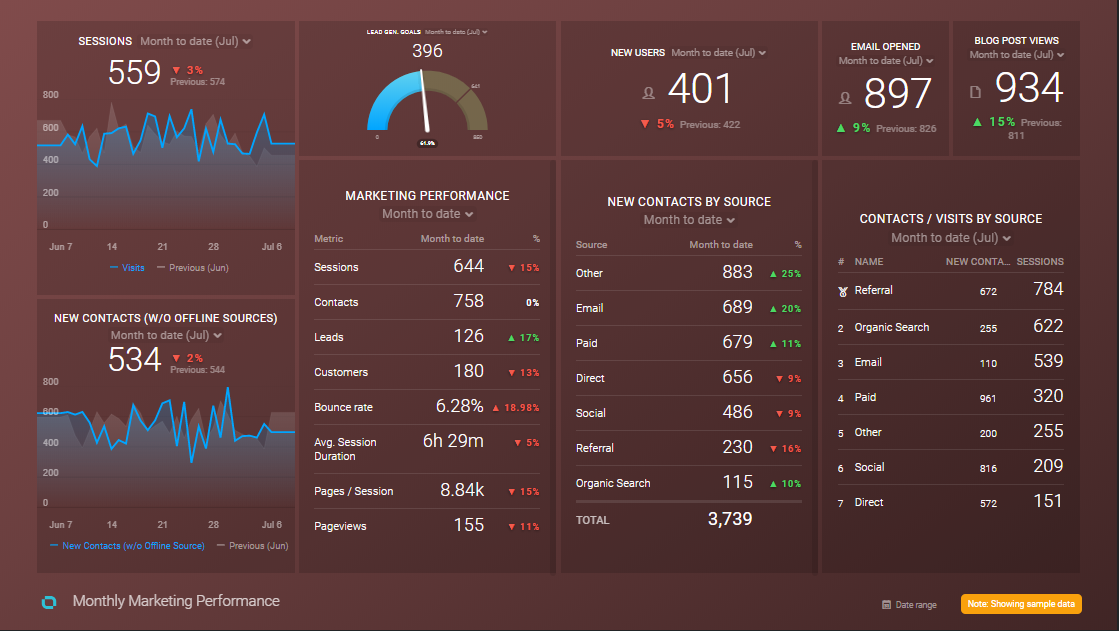-
Digital Marketing
We help you to use your digital potential. For a strong positioning, more visibility and more leads.
Get Growth ready
With the BEE.Transformance model, we bring continuous and profitable growth to your company. A new mindset for your team.
Industries
We transform your challenges into opportunities through the experience we have gained from projects in these industries.
-
HubSpot Services
As a HubSpot Diamond Partner, we help you implement your digital growth strategy with a focus on performance - by implementing and integrating new and existing systems as well as 3rd party apps.
HubSpot Thought Leader
As a HubSpot Diamond Partner with +50 certifications, host of the HubSpot User Group Zurich, HubSpot Trainer and HuSpot User Champions, you have access to in-depth HubSpot expertise.
HubSpot Solutions
The BEE.Theme offers you more creative freedom than any other theme on the market. Whether you're a beginner or a professional, a creative mind or a digital agency - with the BEE theme, you can easily unleash the maximum power for your pages in HubSpot CMS.
-
BEE.Blog
Knowledge around digital marketing, digital sales, technology, data intelligence and employees.
Knowledge Base
Pure knowledge: everything essential concentrated, compact, digitally prepared for you and ready to download.
What is inbound?
The most effective way to successfully combine digital marketing and digital sales.
-
BEE.Team
The BEE.Performers: many different characters - with one thing in common: the fascination for a digital world.
References
More than 100 large and small companies have already started with BEE: to more visibility, more performance, more growth.
Invest
Participate in the growth of BEE and become part of the BEE Growth Story by purchasing Digital Share Tokens.
We're hiring
Become a BEE.Performer! Are you ready for your own transformation?
Data Mapping: Better Insights to Make Data-Based Decisions
In a world that treats data as the new gold, data-driven organisations don't just have a competitive edge; they're practically in a league of their own. Studies show that these organisations are 19 times more likely to be profitable. Perhaps this profitability is fuelled by their 23 times higher likelihood to acquire new customers and a knack for customer retention that others can only envy.
But here's the kicker: Having access to mountains of data is only half the battle. The real game-changer lies in how well you can analyse this data and act on the insights you glean from it. When done right, it offers a bird's-eye view into streamlining costs, crafting laser-focused strategies, and honing in on operational efficiencies. In short, knowing your business inside and out equates to understanding your customers better, and that's how you create truly meaningful engagements.

Source: Alina Grubnyak from Unsplash
So, where do you find this treasure trove of business-critical data? The answer lies in your Customer Relationship Management (CRM) platform. And let's just say as HubSpot Diamond Partners, we can't hide our bias for HubSpot when it comes to orchestrating sales, marketing, and customer success.
However, to fully exploit the capabilities of any CRM, there's one crucial process that's often underestimated: data mapping. As your business scales and your tech stack follows suit, abiding by best practices in tech migrations, integrations, and database hygiene becomes non-negotiable. A haphazard CRM isn't just a minor inconvenience; it's a blockade that impacts your capacity to efficiently process and convert leads.
In this blog, we're going to unpack how data mapping can be your secret weapon in elevating your data-driven decision-making.
What is Data Mapping?
Think of data mapping as the cartography of your digital terrain. In simple terms, it's the process of plotting out how data elements from one system correspond to those in another.
You may have business-critical data scattered across different platforms — maybe you use Salesforce for sales records and HubSpot for customer interactions and marketing metrics. Data mapping helps you pull any disparate pieces together, harmonise them and load them into your final destination, like your CRM.
Data mapping also helps you to visualise your data and connect data fields so that you can formulate the best plan for moving from one point to another. For example, take a look at how each property field type in HubSpot corresponds to Salesforce field types.
Why is Data Mapping Important?
Data mapping isn't a tech chore; it's an essential step in your integration efforts. If you're migrating from one system to another, a well-executed data map will be like your GPS — sure, you may survive without it, but you'd waste precious time troubleshooting errors or even bigger problems. Below, we list all the reasons why data mapping is important and the benefits this process can deliver when executed correctly:
Better Decision-Making
As with everything, you get good data and bad data. To ensure that your CRM is analysing accurate, actionable data that leads to more reliable analytics, you need data mapping. Any plans or strategies you execute should factor in the data you hold on customer behaviour, previous successes and failures, and other related insights to ensure your next move is bound for success.
Enhanced Integrations
Data mapping is often the key to successful API calls, third-party integrations, and even simple data transfers from one platform to another. CRMs like HubSpot allow for some pretty sophisticated integrations. Data mapping can allow you to take full advantage of all the capabilities available to you.
Improved Database Hygiene
Bad data is the bane of any CRM system. Keeping your CRM free from duplicates, half-complete records, and other data-related errors will keep your system optimised. Good data hygiene ensures better reports, more accurate sales forecasts, and more efficient marketing efforts.
Revenue Attribution
Knowing where your data sits and how it interacts with different data sets will enable you to attribute revenue to specific channels, campaigns, or touchpoints. This is incredibly important for marketing teams that need to prove how their efforts generate results for the business. Correct data mapping allows you to accurately track performance, which can be a huge catalyst for alignment between sales and marketing.
Standardisation
Different systems often have different names for the same data field. For example, if your business uses location-based properties, one system may use "Johannesburg" for that city's name, while another may have it as JHB. Data mapping can help to ensure that your data synchronises correctly and gives you information that's clear and easy to interpret.
6 Essential Steps for Data Mapping
- Define and specify - Which data needs to be moved? Include the tables, the fields within those tables, and the format of that field after it has been moved. If you're dealing with integration, you'll have to specify how frequently data should be transferred.
- Create your data map - Match the data from the source system to the target system.
- Transform - Sometimes, a field may require transformation whereby a transformation rule has to be coded.
- Check and test - Use a test system or sandbox to see if sample data from the source will transfer as expected. Make adjustments and iterations where necessary.
- Deploy and launch - When you have the necessary assurance that everything is working as expected and planned, you can schedule the migration or integration.
- Improve and maintain - Data sources may change, or perhaps the requirements of the destination have shifted. It's important to frequently check and update your systems as new data is added.
Why Work With HubSpot CRM Expert to Get Data Mapping Right?
We know that data is essential, but it's also growing in volume every day with the potential to become a very difficult beast to tame. The ability to organise data in a meaningful way is a specialist skill. When trying to handle complex data management processes, effective data mapping is critical.
If you're dealing with integrations that aren't native to HubSpot or the systems don't use similar nomenclature for specific data sets, you can spend a lot of time second-guessing yourself before hitting the sync button. Migrations and integrations can create huge headaches as errors crop up, and you may lose buy-in from stakeholders if you're trying to introduce a new tool.
Having an experienced partner in your corner will give you the confidence you need to ensure everything data-related in your CRM is functioning as it should be. Here's how we can help:
Tech Stack Migration/Implementation
If you're considering migrating to a new tech stack or implementing one for the first time, data mapping is the unsung hero. We ensure the data landscape is prepared, audited, and mapped to fit seamlessly into your new or existing technology stack. We can help you work out the specific user journey you’re looking to create by integrating with third party tools. Enquire about our tech integration scoping audit here.
Integrations
Integrating multiple systems can be a complex task. With our experience, we can navigate the data mapping landscape to ensure that all your third-party tools are sharing the correct data with each other and with your HubSpot CRM.
Data Hygiene
We help you implement consistent data hygiene practices through correct data mapping, ensuring that your HubSpot CRM remains a reliable tool for your sales and marketing efforts.
Reporting and Attribution
Correct data mapping is crucial for effective revenue attribution models. We can set you up with the right tracking and tagging parameters to ensure you know what's working and what's not.
Conclusion
Have the data but don't know what to do with it? We can help. Need to integrate systems and would like someone to take on the project for you? We can help. Migrating from an old CRM to HubSpot? We can help.
As a HubSpot Diamond Partner, we are poised to offer you unparalleled expertise in Tech Stack Migration/Implementation, Integrations, Database Hygiene, and Revenue Attribution. Ready to get started? Let's talk.
Comment
Related Posts

Improved HubSpot Reporting with Databox
Katrin Zimmermann | 15 Dec 2022
Your business collects data from so many different sources. It's the blessing and the curse of the digital age we find ourselves in. On the one hand, you have more ...
reading time: 7min
Zum Blog

How to Clean Data in HubSpot with the Operations Hub
Romy Fuchs | 17 Nov 2022
Without a clean database, your marketing campaigns, reports and deals will lead to skewed figures and questionable estimations - a little counterproductive when you ...
reading time: 7min
Zum Blog

New Data Protection Law in Switzerland: What you should know for your HubSpot website
Romy Fuchs | 13 Jul 2023
We've taken quantum leaps in the digital realm since 1992 — the year Switzerland's current data protection laws were established. As of September 1, 2023, Switzerland ...
reading time: 6min
Zum Blog
